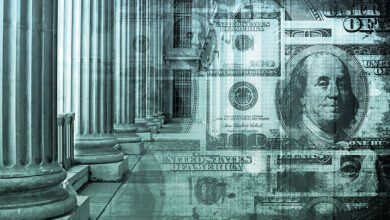Breaking Down Auto Loan Performance


Debt balances continued to rise at a moderate pace in the fourth quarter of 2024, and delinquencies, particularly for auto loans and credit cards, remained elevated, according to the latest Quarterly Report on Household Debt and Credit from the New York Fed’s Center for Microeconomic Data. Auto loan balances have grown steadily since 2011, expanding by $48 billion in 2024. This increase reflects a steady inflow of newly originated auto loan balances, which in 2024 were boosted primarily by originations to very prime borrowers (those with credit scores over 760) while originations to borrowers with midprime and subprime scores held roughly steady. In this post, we take a closer look at auto loan performance and find that delinquencies have been rising across credit score bands and area income levels. We also break down auto loan performance by lender type and find that delinquencies are primarily concentrated in loans from non-captive auto finance companies.
Note: The Quarterly Report and this analysis both use the New York Fed’s Consumer Credit Panel, which is based on Equifax credit report data.
The chart below depicts the annual auto loan origination volumes by credit score over the last five years. We see that the expansion in originations has largely been driven by higher credit score borrowers. Prime borrowers with credit scores above 760 originated $264 billion in new auto loans in 2024, up from $252 billion in 2023 and $250 billion in 2022. For the remainder of borrowers, originations have held below 2022’s elevated volumes. With the continued strength in lending to prime borrowers, the subprime share overall—at about 16 percent of total new loans originated—remained relatively low in 2024 by historical standards. Overall, loan quality has remained relatively solid, with the median credit score of newly opened loans edging up since the end of 2022 (see page 9 in our Quarterly Report).
Midprime and Subprime Origination Volumes Largely Stable Between 2023 and 2024
Note: The chart shows annual volume of auto loan originations by credit score at time of origination.
Despite a small change in the quality of newly originated loans, auto loan delinquency rates have been rising overall, as discussed in a previous post. In the chart below, we disaggregate auto loans according to borrower credit score at origination and show the transition rates into delinquency (at least thirty days past due). Nearly all borrower groups have seen delinquency rates rise beyond their pre-pandemic levels. For example, prior to the pandemic, borrowers originating new auto loans who had credit scores between 620 and 679 had around a 2 percent likelihood per quarter of becoming delinquent; however, borrowers with those scores now have around a 4 percent chance over the course of 2024.
Delinquency Rates Above Pre-Pandemic Levels
Percent of auto balances newly 30+ days past due
Note: The chart shows new auto delinquencies by credit score at time of origination.
Next, we take a look at delinquency by lender type. The chart below splits auto loan delinquencies into those by banks (further divided into larger and smaller banks), credit unions, captive lenders (such as Ford Finance or Honda Finance), and non-captive auto finance companies (for example, Truist or AmeriCredit Financial). What stands out first is the difference in delinquency rates between non-captive auto finance companies (shown in dark blue), which have historically had worse performance, and those from other types of lenders. Generally, non-captive auto finance loans are more likely to be to borrowers with relatively lower credit scores and also are more likely for used cars. Loans from these companies have seen the most pronounced rise in delinquency rates in the past few years and are notably above their pre-pandemic levels.
By contrast, loans from captive lenders are generally to higher credit score borrowers, and they typically perform better. In fact, in 2024:Q4, the median credit score of borrowers of newly opened captive loans was 755, compared to the non-captive auto finance median origination credit score of 636. Among the best performing loans are those by small banks and credit unions, which have the lowest delinquency rates. (Smaller banks are defined as those banks not subject to the CCAR stress test.) Both credit unions and small banks had median origination credit scores of just over 730.
Worsening in Delinquency Rates Most Pronounced Among Auto Finance Company Loans
Percent of auto balances newly 30+ days past due
Note: The chart shows new auto delinquencies by lender type.
Finally, we take a look at loan performance by neighborhood income of the borrowers. Individual-level incomes are not available in our data, so we group individuals based on the income in their zip code, sourced from Internal Revenue Service income statistics. Delinquency rates, which we again show below as the share of balances that become thirty or more days past due during the quarter, have risen for all borrower groups. While this includes even those in the highest income group (shown in dark blue), the rise in delinquency rates for borrowers in the lowest income areas (in light blue) has been the most pronounced.
Loan Performance Has Worsened Even for Borrowers in Higher-Income Areas
Percent of auto balances newly 30+ days past due
Note: The chart shows new auto delinquencies by zip code income.
Conclusion
Overall, consumers are in pretty good shape in terms of the household debt landscape, largely driven by stable balances and solid performance in mortgage loans. However, for auto loans, higher car prices combined with higher interest rates have driven monthly payments upward and have put pressure on consumers across the income and credit score spectrum (for more on the rise in monthly payments, see our previous post on auto loans). The episode of rapidly rising car prices has had heterogeneous impacts on borrowers, who have shifted between used and new cars as well as between loans and leases. These shifts have put additional pressure on lower-income and lower-credit-score borrowers who may have had to opt for higher-price used cars over the last few years. Used car prices have since declined from the peak, potentially leaving some borrowers underwater on those vehicles and creating potential repayment challenges. At the same time, the decline in auto prices could imply that the more recently originated vintages of auto loans may fare better as those loans age.

Andrew F. Haughwout is deputy research director in the Federal Reserve Bank of New York’s Research and Statistics Group.

Donghoon Lee is an economic research advisor in the Federal Reserve Bank of New York’s Research and Statistics Group.

Daniel Mangrum is a research economist in the Federal Reserve Bank of New York’s Research and Statistics Group.

Joelle Scally is an economic policy advisor in the Federal Reserve Bank of New York’s Research and Statistics Group.

Wilbert van der Klaauw is an economic research advisor in the Federal Reserve Bank of New York’s Research and Statistics Group.
How to cite this post:
Andrew Haughwout, Donghoon Lee, Daniel Mangrum, Joelle Scally, and Wilbert van der Klaauw, “Breaking Down Auto Loan Performance,” Federal Reserve Bank of New York Liberty Street Economics, February 13, 2025, https://libertystreeteconomics.newyorkfed.org/2025/02/breaking-down-auto-loan-performance/.
Disclaimer
The views expressed in this post are those of the author(s) and do not necessarily reflect the position of the Federal Reserve Bank of New York or the Federal Reserve System. Any errors or omissions are the responsibility of the author(s).




